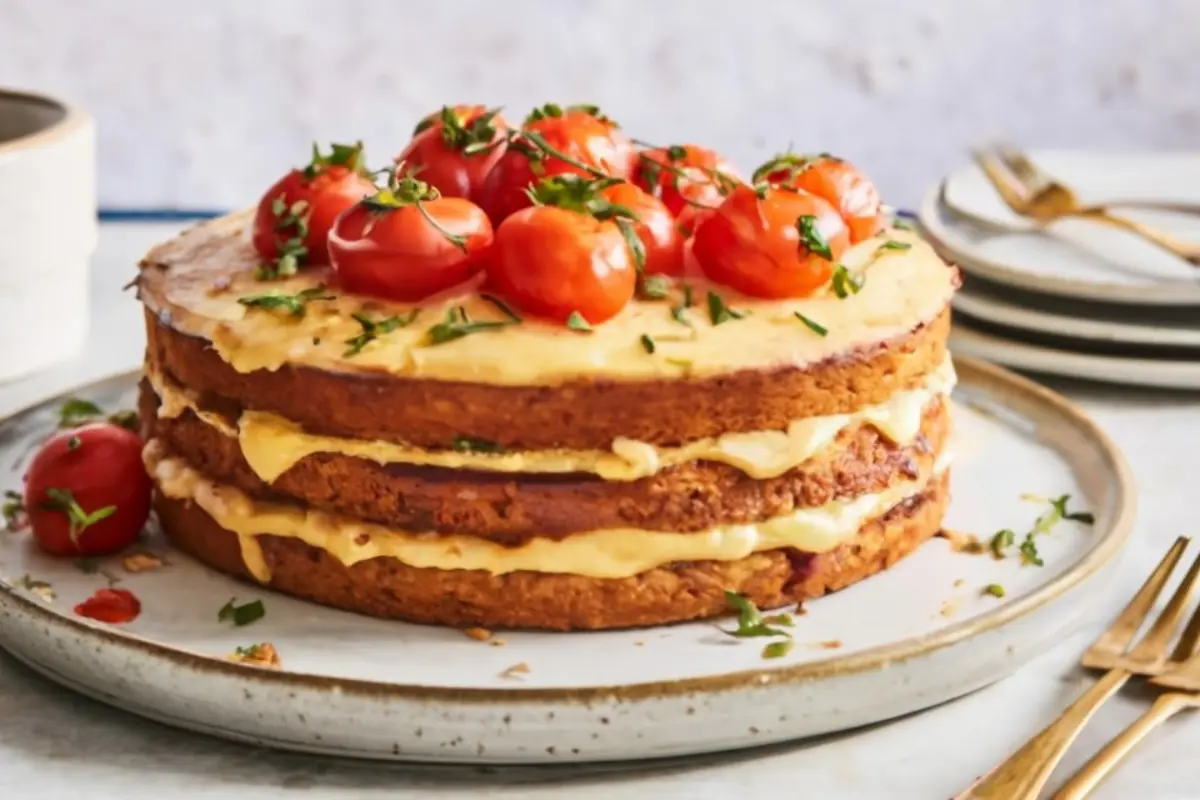Part 1: Introduction to Fricassee Cake
What is Fricassee Cake?
Fricassee cake, a name that often piques curiosity, is a unique blend of flavors and textures. It’s not your average cake; it’s a symphony of ingredients that come together to create something truly special. But what makes it stand out? Is it the creamy filling, the fluffy texture, or the rich history behind it? In this section, we’ll unravel the mystery of cake, highlighting its distinctive features and what sets it apart from other desserts.
The Origin and History of Fricassee Cake
Now, let’s take a step back in time. The story of fricassee cake is as rich as its flavor. Originating from humble beginnings, this cake has traveled through time and across borders, evolving with each generation. From its early days in European kitchens to its modern interpretations around the globe, the journey of cake is a testament to its enduring appeal. In this part, we’ll trace its history, uncovering how it became the beloved dessert it is today. For a fascinating glimpse into the historical context of desserts, explore this Library of Congress blog post detailing a culinary adventure with a historic gingerbread recipe.
Part 2: Ingredients and Variations
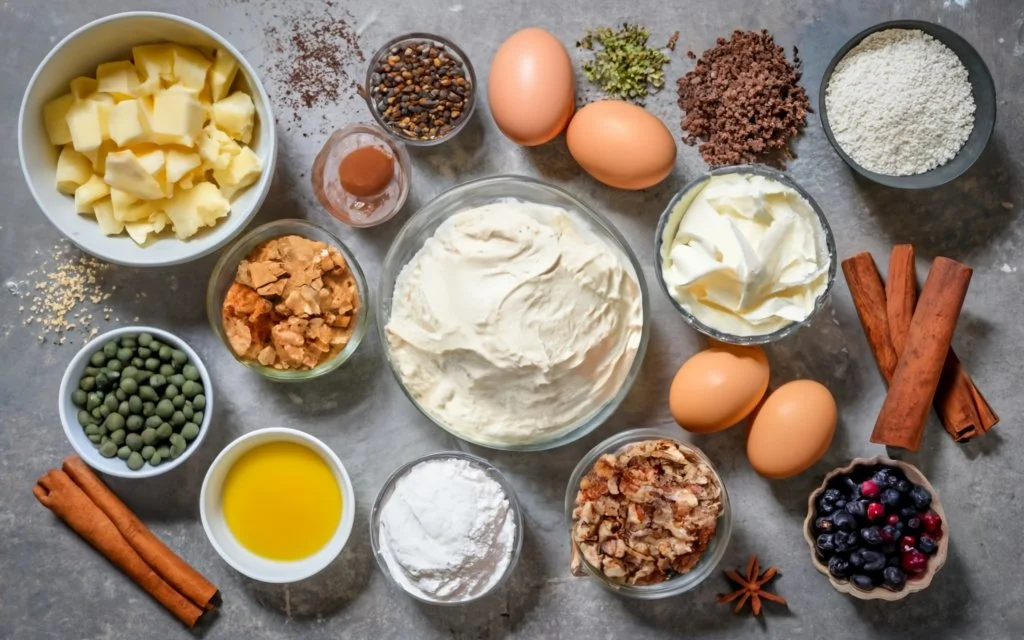
Key Ingredients of Fricassee Cake
When it comes to making a fricassee cake, the magic lies in its ingredients. Typically, this cake includes a blend of flour, sugar, eggs, and butter, but the real secret is in the balance and quality of these components. Additionally, many recipes call for a touch of vanilla or a hint of citrus to add that extra zing. In this section, we’ll list these key ingredients and discuss how each contributes to the cake’s delightful flavor and texture. For more cake recipes and variations, visit our detailed guide on Fricassee Cake Recipes.
Variations in Fricassee Cake Recipes
Moreover, the beauty of fricassee cake lies in its versatility. While the traditional recipe has its charm, numerous variations have emerged over time. From adding nuts and fruits to experimenting with different types of flour, each variation brings a new dimension to the classic cake. Here, we’ll explore some of these popular variations, showcasing how different cultures and personal preferences have influenced this timeless recipe. Learn about the traditional use of fruits in desserts and how they can enhance dishes like fricassee in this insightful article from The Nourishing Gourmet
Part 3: Making Fricassee Cake
Step-by-Step Guide to Making Fricassee Cake
Now, let’s roll up our sleeves and dive into the heart of the matter: making your own fricassee cake. Firstly, gather all your ingredients. Begin by creaming the butter and sugar until light and fluffy. Next, gradually add eggs, ensuring each is fully incorporated before adding the next. After that, sift in the flour, folding it gently to keep the mixture airy. If the recipe calls for it, this is the time to add your unique twist – be it citrus zest, nuts, or dried fruits. Then, pour the batter into a prepared pan and bake until golden. Finally, let the cake cool before serving. This step-by-step guide will ensure that even a novice baker can create a delicious cake.
Common Mistakes and Tips for Perfect Fricassee Cake
Furthermore, it’s crucial to be aware of common pitfalls in baking fricassee cake. One frequent mistake is overmixing the batter, which can lead to a dense cake. Another is not preheating the oven, which can affect the cake’s rise. To avoid these, always mix just until the ingredients are combined and always preheat your oven. Additionally, ensure your ingredients are at room temperature for better integration. Following these tips will help you bake a cake that’s as delightful to eat as it is to make.
Part 4: Serving and Pairing
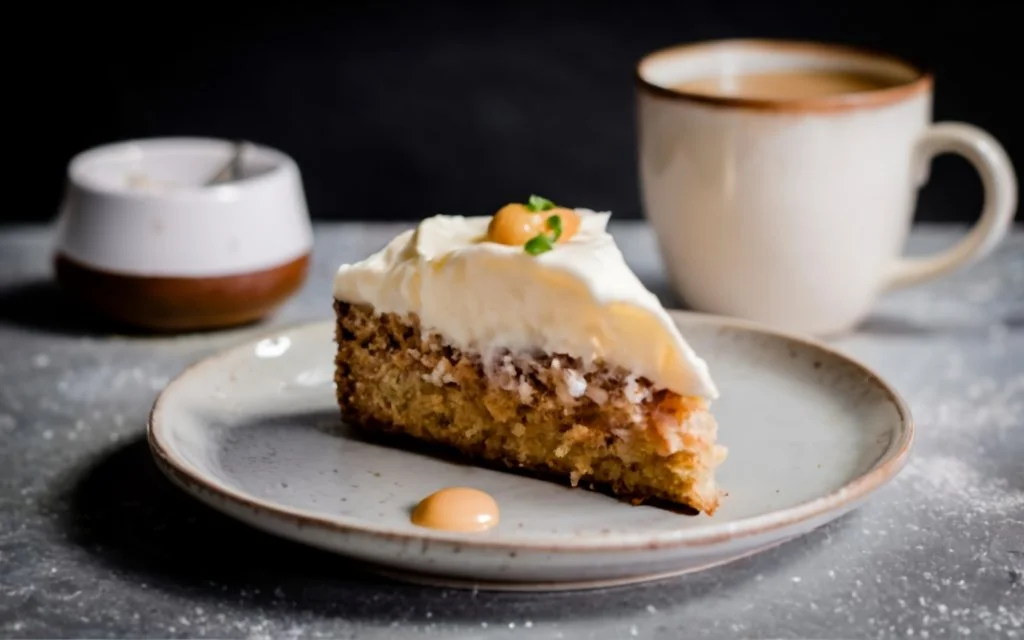
Ideal Ways to Serve Fricassee Cake
Once your fricassee cake is baked to perfection, presenting it in the best way is key. Firstly, consider the occasion. For a formal event, elegant plating can enhance the cake’s appeal. A dollop of whipped cream or a drizzle of fruit sauce can add a touch of sophistication. Alternatively, for a casual gathering, serving the cake with a scoop of ice cream or a sprinkle of powdered sugar might be more fitting. Remember, the way you serve the cake can transform it from a simple dessert to a memorable experience.
Pairing Suggestions: Drinks and Side Dishes
Moreover, what you pair with fricassee cake can elevate its flavors. A light, sweet dessert wine or a cup of aromatic coffee can complement the cake’s richness beautifully. If you prefer non-alcoholic options, a herbal tea or a fruit-infused water can be refreshing. As for side dishes, a fruit salad or a scoop of gelato can balance the cake’s sweetness. These pairing suggestions are sure to enhance your cake experience, making it even more enjoyable.
Part 5: Nutritional Information
Understanding the nutritional aspect of fricassee cake is essential, especially for those mindful of their diet. Firstly, it’s important to note that like most cakes, fricassee is a treat best enjoyed in moderation. Typically, a slice contains a significant amount of calories, primarily from sugars and fats. However, this doesn’t mean it can’t be part of a balanced diet. By being aware of portion sizes and how often you indulge, you can enjoy fricassee without guilt.
Moreover, for those looking to make it healthier, there are options. Substituting ingredients like whole wheat flour for white flour or using reduced-fat butter can make a difference. Additionally, incorporating fruits or nuts not only adds nutritional value but also enhances the flavor. These small changes can make your cake a bit more diet-friendly while still maintaining its delicious taste.
Part 6: Cultural Significance
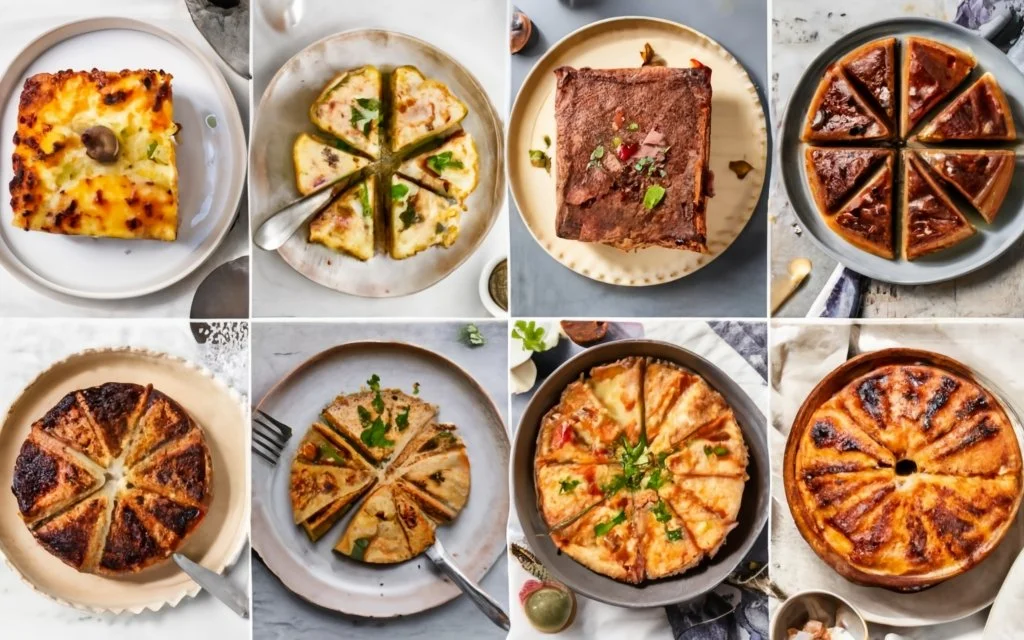
The cultural significance of fricassee cake extends far beyond its delightful taste. Firstly, this cake has been a part of numerous cultural traditions and celebrations. In some regions, it’s a staple at weddings and festivals, symbolizing joy and togetherness. Additionally, the recipe for cake is often passed down through generations, making it a cherished heirloom in many families.
Moreover, cake has evolved differently in various cultures. In some countries, it’s infused with local flavors and ingredients, reflecting the region’s culinary heritage. This adaptability not only shows the versatility of the cake but also how food can be a bridge between cultures. Exploring the different cultural interpretations of cake offers a glimpse into the diverse ways people around the world celebrate and enjoy food.
Part 7: Expert Opinions and Reviews
Chef Insights on Fricassee Cake
When it comes to fricassee cake, professional chefs have a wealth of knowledge and experience to share. Firstly, many emphasize the importance of quality ingredients for the best flavor. Additionally, they often suggest experimenting with the recipe, encouraging home bakers to add their personal touch. This could be a unique spice blend or a special frosting technique. Moreover, chefs appreciate the cake’s versatility, noting how it can be adapted to suit different dietary needs or flavor preferences. Their insights not only enrich our understanding of cake but also inspire us to explore our culinary creativity.
Customer Reviews and Preferences
Furthermore, customer reviews shed light on the widespread appeal of fricassee cake. Many describe it as a comforting, nostalgic dessert that brings back fond memories. Others praise its perfect balance of sweetness and texture. Interestingly, some reviews highlight how cake has become a part of their family traditions, often served at special occasions. These personal stories and preferences underscore the cake’s ability to connect people and create lasting memories.
Part 8: DIY Fricassee Cake at Home
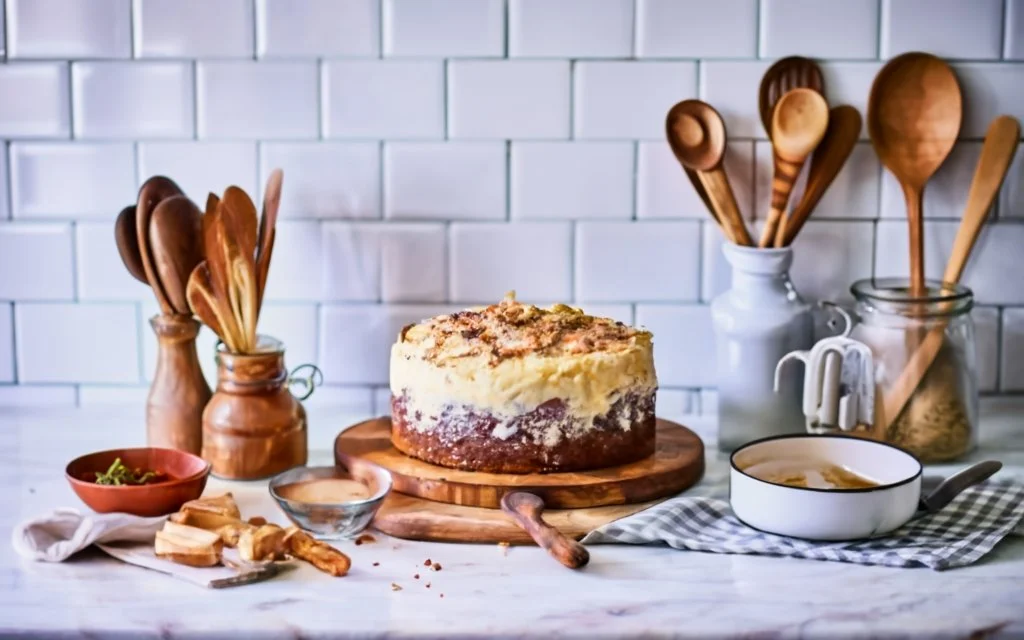
Homemade Fricassee Cake Recipe
Now, let’s embark on the exciting journey of making your own fricassee cake. Firstly, gather all the essential ingredients: flour, sugar, eggs, butter, and your choice of flavorings. Begin by creaming the butter and sugar, then gradually add the eggs. Next, sift in the flour, folding it gently. If you’re feeling adventurous, add a personal twist like lemon zest or almond extract. Pour the batter into a greased pan and bake until golden. Once cooled, your homemade cake is ready to be savored!
Decorating and Presentation Tips
Moreover, the presentation of your fricassee cake can make it even more appealing. For a simple yet elegant look, dust it with powdered sugar or drizzle with a light glaze. If you’re up for a challenge, try piping on some decorative frosting or arranging fruit on top. Remember, the key is to enhance the cake’s natural beauty without overwhelming it. These tips will help you present a cake that’s as stunning to look at as it is delicious to eat.
Part 9: Conclusion
The Enduring Popularity of Fricassee Cake
Reflecting on the journey of cake, it’s clear why this dessert has maintained its popularity over the years. Firstly, its versatility and adaptability to various tastes and occasions make it a perennial favorite. Moreover, the cake’s rich history and cultural significance add depth to its appeal, transcending mere taste. Additionally, the joy of baking and sharing a cake, whether following a family recipe or creating a new variation, fosters connections and memories. In essence, cake is more than just a dessert; it’s a symbol of tradition, innovation, and the sweet moments in life. To understand more about the role of desserts in culinary history, including cake, visit this comprehensive Wikipedia page on Desserts.
Part 10: FAQs
Frequently Asked Questions about Fricassee Cake
- What makes fricassee cake different from other cakes? Fricassee cake stands out due to its unique blend of flavors and textures. Typically, it involves a delicate balance of ingredients that create a distinct taste, setting it apart from other cakes.
- Can fricassee cake be made gluten-free? Absolutely! You can substitute the regular flour with a gluten-free alternative to cater to dietary needs without compromising the cake’s delicious flavor.
- Is fricassee cake suitable for vegans? While the traditional recipe includes eggs and butter, there are vegan versions available. These use plant-based substitutes to replicate the classic fricassee taste.
- How long does fricassee cake stay fresh? Properly stored in an airtight container, fricassee cake can remain fresh for up to 3-4 days at room temperature.
- Can I freeze fricassee cake? Yes, fricassee cake freezes well. Wrap it tightly in cling film and it can be stored in the freezer for up to a month.

